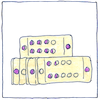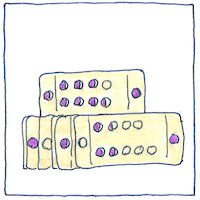Charles Babbage, Alan Turing, John von Neumann
computer science

|
Computer
If it had been built, Babbage’s Analytical Engine, a mechanical computer, would have been programmed using punched cards. Babbage continued to improve the design until he died in 1871. In 1936, Alan Turing invented a hypothetical device, a universal logical computing model that could model anything computable, even itself. And by 1948, Von Neumann established the basis of modern computer architecture and designed the instruction set for ENIAC, which some say was the first programmable general-purpose computer. All efforts have steadily ensured that our expectations have exceeded the speed of our machines.
Colossus
During World War II, Turing and von Neumann contributed to the British effort to decode messages from the German High Command. The Colossus machines, the first programmable electronic digital computers, were built to help decipher streams from the German’s cipher attachments for the Lorenz teleprinters. The Colossus machines were destroyed and their existence kept secret, but they shortened the war and gave vitality to British computer science lasting many years after.
Patterns
A stick with notches can simulate a drumming pattern. Stencils can repeat designs. Punched holes in a paper roll can control a loom. Pins in a cylinder can match a key; pins on a drum can play a tune. Why waste time repeating yourself? If you say “Hello,” I’ll just say “No.”



Babbage and Hollerith had previously created machines that performed analysis and statistical compilations. Even the Colossus machines were not general-purpose computers, but were rather designed to perform specific cryptanalytic tasks. However, Babbage’s Analytical Engine design, Turing’s model, and von Neumann’s design for ENIAC were for general-purpose programmable computers.
See also in The book of science:
Readings in wikipedia: